When Do Labradoodles Shed Their Puppy Coat?
A major factor that has made Labradoodles so sought-after is their hypoallergenic coats.
If you’ve recently brought home a Labradoodle pup, you must’ve been in awe of its incredibly soft fur coat. And the next question on your mind must be whether Labradoodles shed their puppy coat.
Everyone wants to know this. As a Poodle Mix expert – I get asked about when dogs will lose their puppy coat all the time!
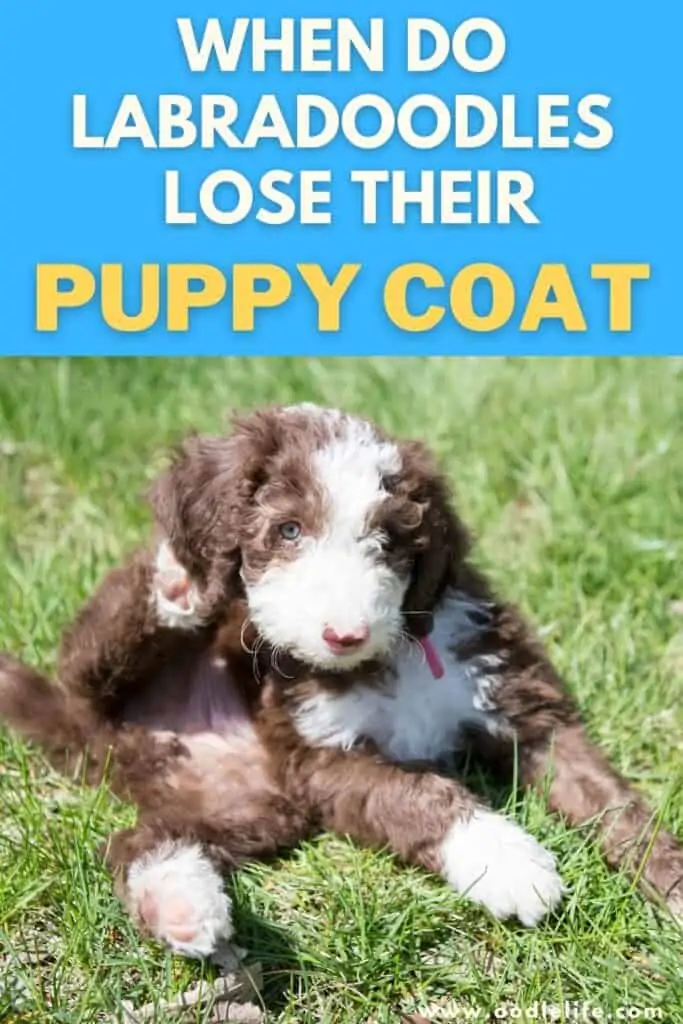
So do Labradoodles have a puppy coat? Does it change?
Yes, they do. Just because Labradoodles are hypoallergenic doesn’t mean their puppy coats do not shed. This is a natural process that you must be well-informed on to be able to properly care for your pup.
In this article we cover
- The three types of Labradoodle coats
- When do Labradoodles lose their puppy coat
- What makes a hypoallergenic dog
- How to groom a Labradoodle puppy during shedding
So, here’s everything you need to know about Labradoodles losing their puppy coats.
Types Of Labradoodle Coats
Before we get into how and why Labradoodles lose their puppy coats, let’s learn a bit more about the coats.
Did you know a Labradoodle’s coat can change in type and color as they grow? That’s right. While you may bring home a Labradoodle thinking you’re getting a certain type of coat, its coat can change completely by the time it becomes an adult.
There are three types of coats that Labradoodles can have.
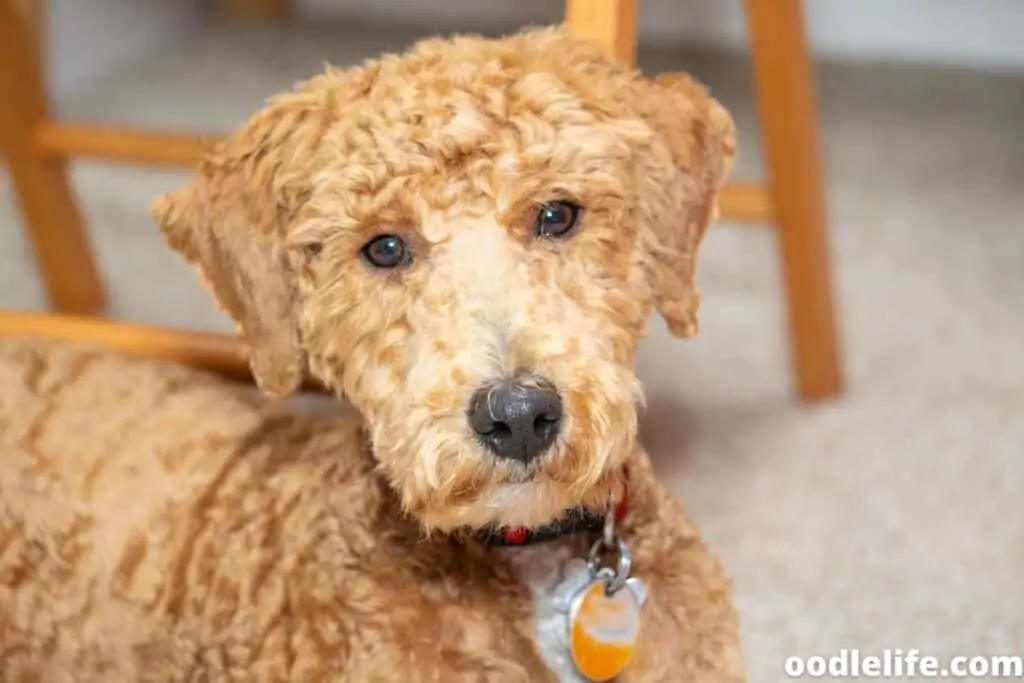
#1. Hair Coated Labradoodles
The straight hair of a Labradoodle is the result of its Labrador parent. A hair-coated Labradoodle is the least popular among people with allergies owing to the fact that it sheds the most out of the three types. This makes them the least hypoallergenic.
The straight coat can vary in length and thickness, so you may have to take your dog to the grooming salon more often than you had anticipated.
The muzzle area is usually hair coated and will be a good indicator of their coat type.
#2. Fleece or Wavy Coated Labradoodles
Fleece-coated Labradoodles are the easiest to maintain compared to the other two types, making them the most preferable.
Labradoodles with this type of coat experience minimal shedding, thus helping keep allergies at bay. This coat also requires the least maintenance.
The fleece coat comes in three varieties — straight, loose curls, and very curly.
#3. Curly, Poodle, or Wool Coated Labradoodles
The wool coat type is soft to touch and incredibly dense, making you feel you’ve brought home a sheep instead of a dog. Similar to the Poodle’s coat, this curly kind barely sheds and is one of the safest options for dog owners with allergies.
However, just because this type of coat sheds the least does not mean you can skip the groomers. Whatever type of coat your Labradoodle may have, a visit to the groomers at least once every six weeks along with regular grooming at home is necessary for maintaining its healthy coat.
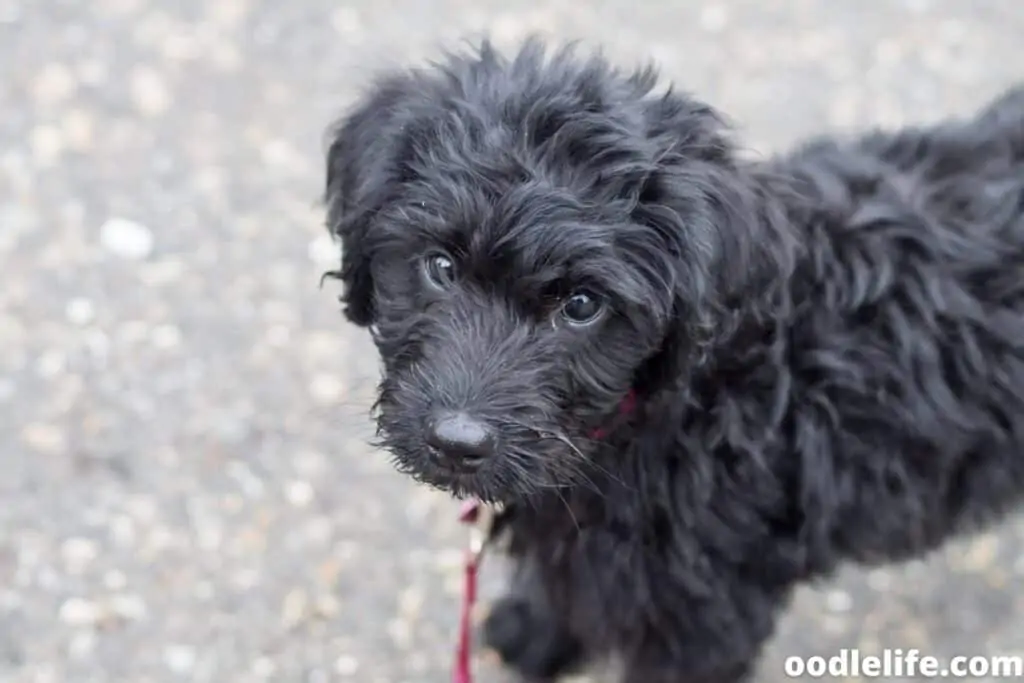
When Do Labradoodle Puppies Lose Their Puppy Coat?
If you’re a first-time owner of a Labradoodle pup and are noticing your pup losing its coat, you must be having a ton of questions.
Labradoodles are a hypoallergenic breed of dog. And if you weren’t aware, Labradoodles do not keep their puppy coats into their adulthood. As they grow, they also begin losing the coats that they are born with. This transition usually starts as early as 6 months of age but can even take until they are 12 months of age.
If your puppy hasn’t started shedding its coat yet and you’re wondering if you can tell when your pooch will begin shedding, it’s simple enough. You can only tell that your pup is shedding if you’re grooming and brushing it regularly.
Ideally, you should brush your pup slowly and carefully, reaching down to its skin to ensure that the old puppy coat is coming off. This will help the puppy coat to shed faster, remove any tangles from its fur, prevent matting, and help the adult coat grow healthier.
Regular grooming will also ensure that your pup doesn’t end up leaving fur all around the house.
Did you know, a Labradoodle’s coat can change in type, texture, and color as it grows? So, even if you brought home a fleece coated Labradoodle, don’t be surprised if it eventually grows to have a hair coat.
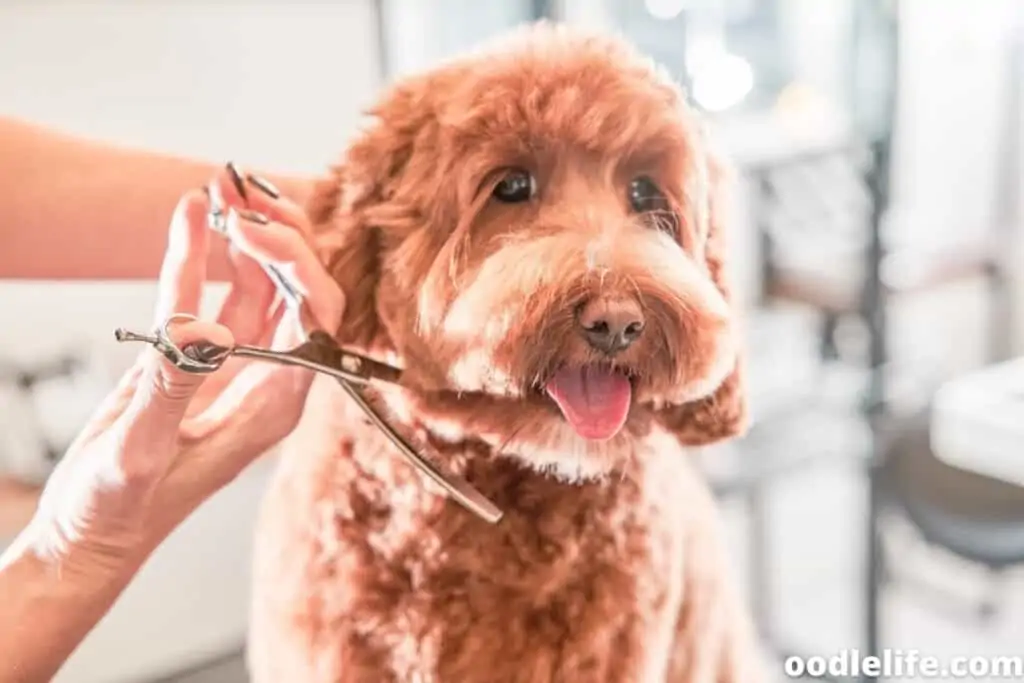
What Are Hypoallergenic dogs?
The Labradoodle ranks #1 for being a hypoallergenic dog and specifically bred for it.
A hypoallergenic dog poses a significantly lower risk of causing an allergic reaction. This is because dogs that are labeled as hypoallergenic shed little to no fur at all.
The first Labradoodle was created for a blind Hawaiian lady whose husband had an allergy to dogs. Since then, the popularity of this breed has grown rapidly. Labradoodles shed less fur, resulting in much less dander, as they have coats that are easy to maintain. However, it is also important to note that there is no dog breed that is 100% hypoallergenic in nature.
Some other well-known hypoallergenic dog breeds include American Hairless Terrier, Bedlington Terrier, Afghan Hound, Chinese Crested, and the Basenji.
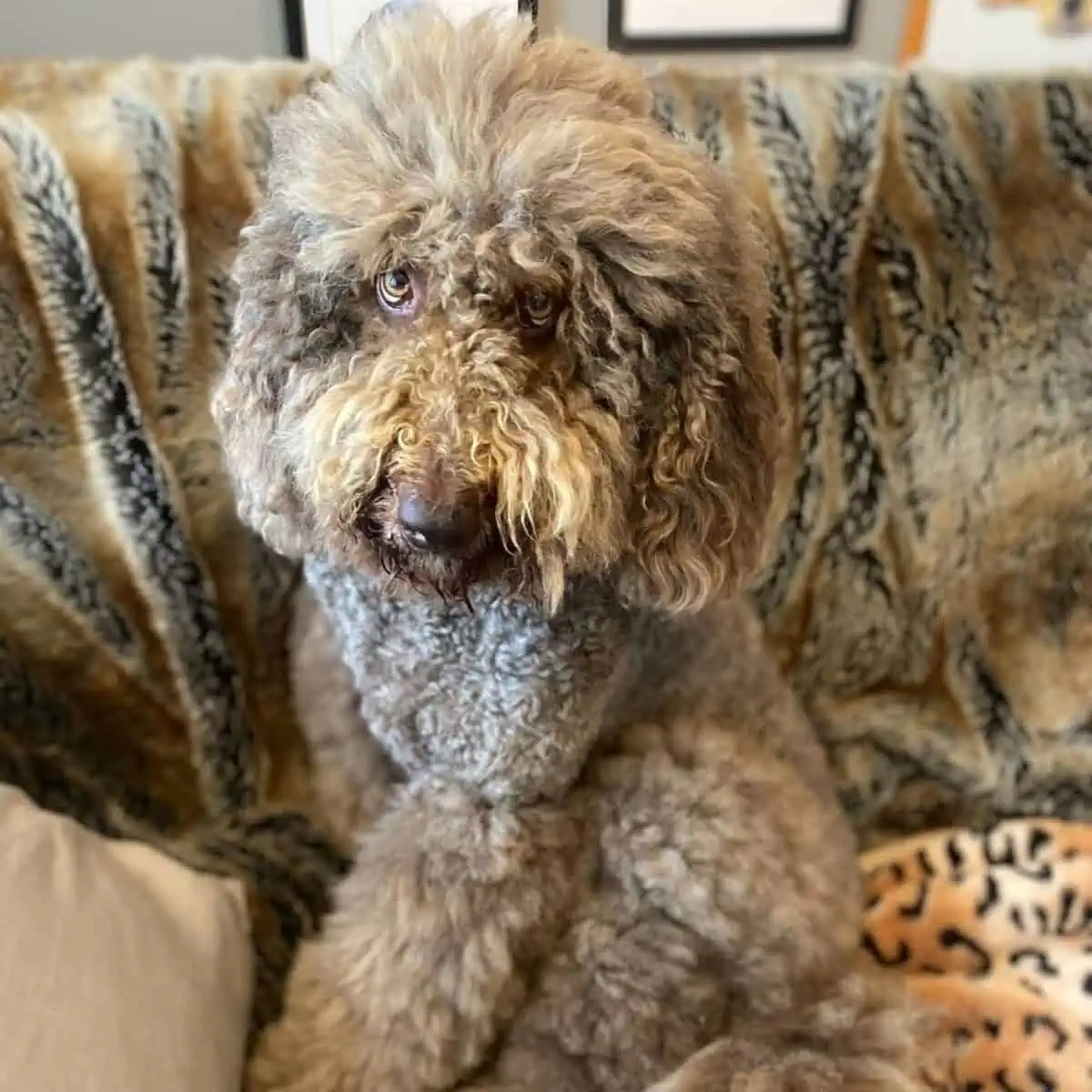
How Do You Know When A Labradoodle Puppy Is Losing Its Coat?
As previously stated, the process of a puppy coat shedding varies from pup to pup but typically begins when they are 6 months of age. You’ll be able to notice your Labradoodles’ puppy coat begin to shed when you brush your pup on a daily basis.
While Labradoodles are a hypoallergenic breed, it does not mean a Labradoodle pup will never lose its puppy coat. There is a distinction to be made between “shedding” and “losing” the coat.
Most furry dog breeds shed in the sense that they lose their fur regularly. This is not the case with Labradoodles. A Labradoodle pup will “shed” only when you brush its coat to get rid of the old puppy coat and allow the new coat to grow in.
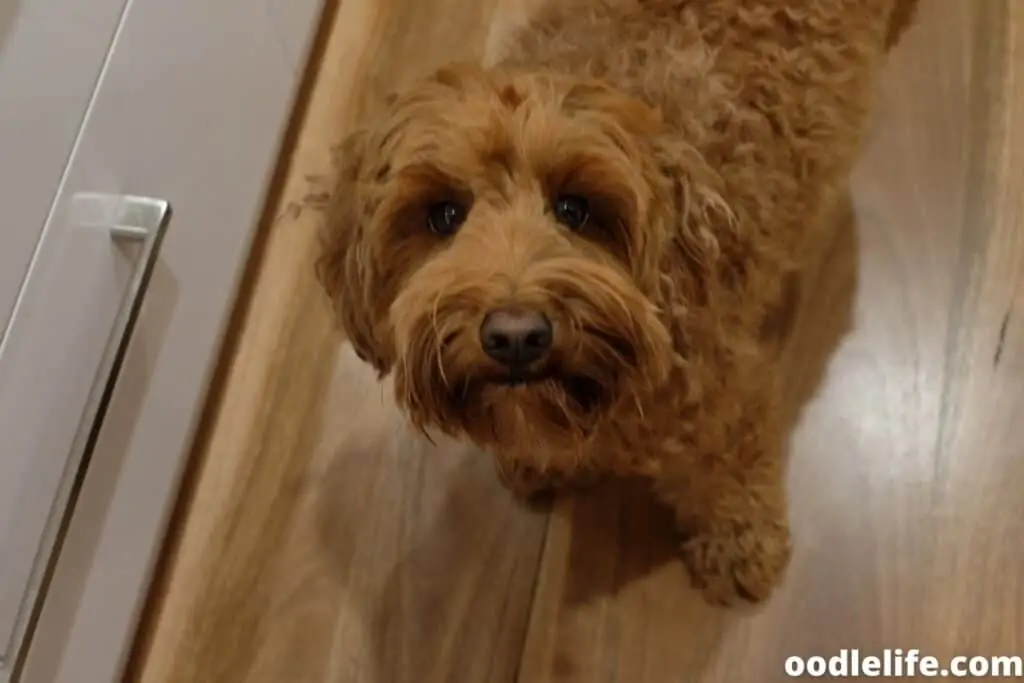
Why Does It Take So Long For Labradoodles To Lose Their Puppy Coat?
A Labradoodle puppy does not shed its puppy coat overnight or within a few days. Losing the puppy coat is a gradual process that can take up to a year and a half until the new coat grows.
To allow the adult coat to grow properly, the puppy coat needs to be shed entirely. This is also why brushing your Labradoodle puppy is so important. When brushing your pup, you will notice strands of hair falling out at first. Eventually, tufts of puppy hair will come out. The more you brush your dog, the more you will be pulling out the old hair to make way for new growth.
Around this time, make sure you inspect your pup’s skin for any kind of infections, hairless patches, rashes, or redness. If you do notice any signs or symptoms, make sure to visit the vet and take appropriate measures for treatment.
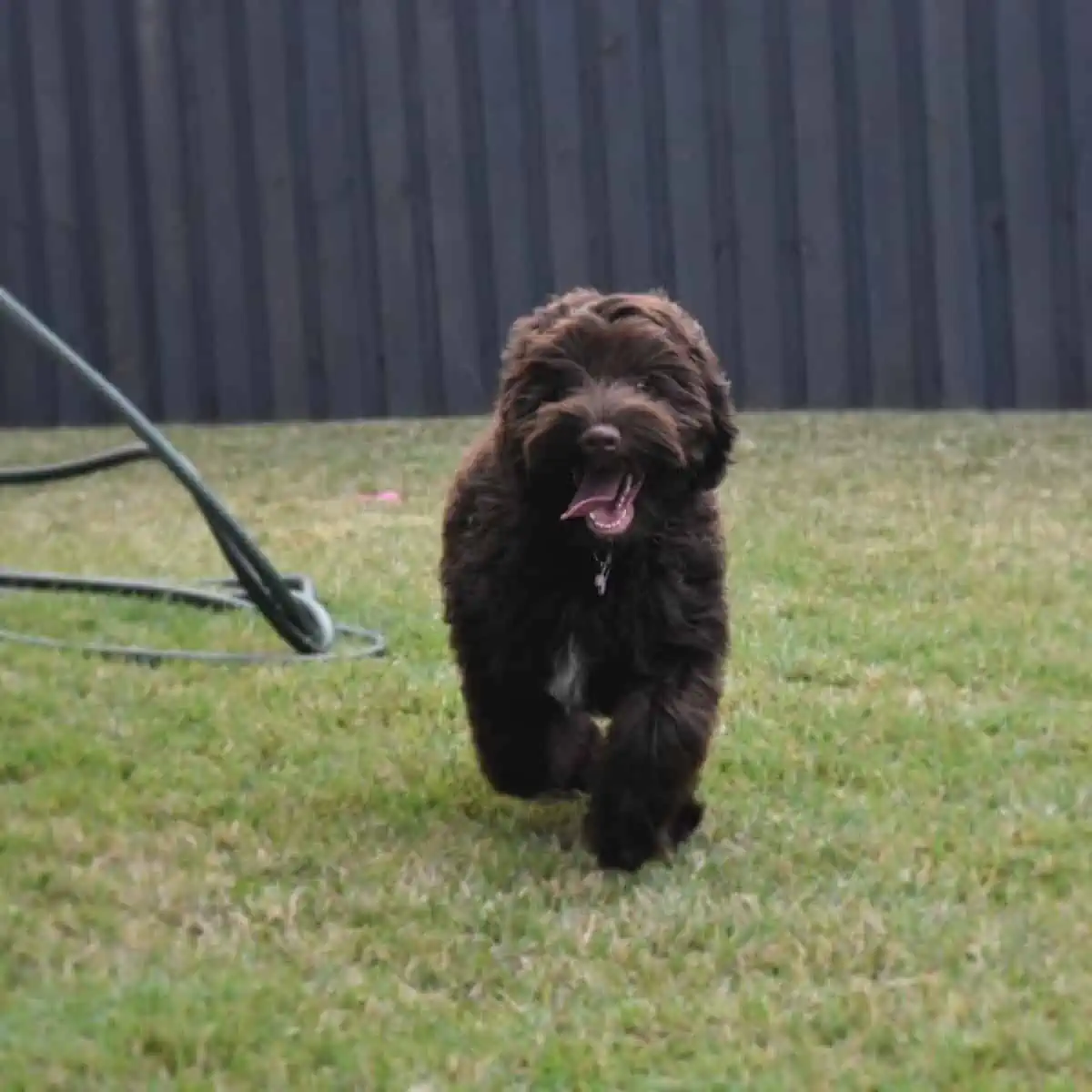
How To Manage A Shedding Labradoodle Puppy Coat
Once your Labradoodle puppy starts shedding its puppy coat, it is advisable that you brush your dog regularly and at least groom it a couple of times every week or during daily periods of excessive shedding.
Different dog breeds shed differently, so if you think something is amiss, you can always consult your vet to get your pup checked out. However, to avoid such dire situations, you need to make sure that you groom and brush your puppy regularly to avoid any matting.
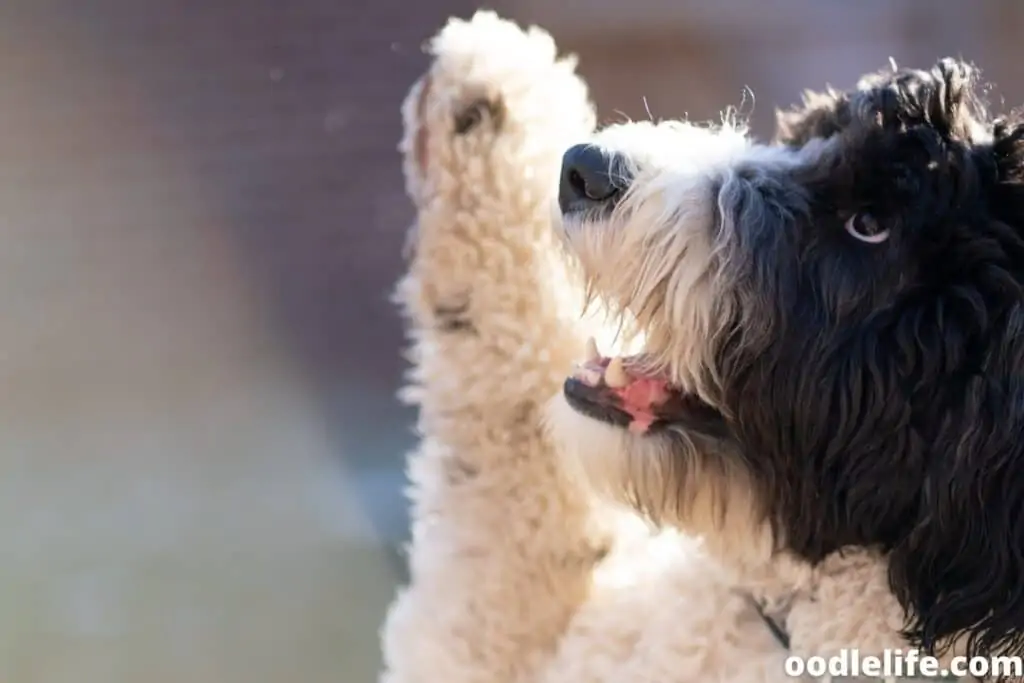
Grooming Your Puppy’s Changing Coat
Grooming your Labradoodle can seem exhausting and often time-consuming, but it is also very necessary. Depending on the type of Labradoodle coat your pup will develop, you should ideally be brushing your dog at least once a week to prevent any matting or tangled fur.
Here’s a helpful guide on the different grooming tools you should have at your disposal and how to use them.
#1. Brush
Choosing the right kind of brush is more important than you’d think. Look for a brush with natural bristles, a hound mitt, or even a glove with bristles on the palm that will allow you to go deeper into your puppy’s coat and loosen the old hair. Slicker brushes usually do the trick as they are great for de-shedding and getting to the deeper layers of your doodle’s hair.
#2. Comb
When you brush the coat, make sure you brush in the opposite direction of the hair growth. This will allow you to remove the old hair better.
Then, you can move on to brushing in the direction of hair growth. You can do this with a fine-tooth comb. Ideally, a wooden or stainless steel comb would be a good choice. Make sure you pick a comb with wide teeth on one end and fine on the other.
#3. Detangler
As your pet grows into a new coat, the old hair can knot up. This is when a detangler is needed. A detangler will help you effectively de-knot the coat without causing any distress to your pet. This tool is designed to help loosen the tangles and mats while being super gentle on your pup.
#4. De-matting Comb
When your doodle puppy starts shedding, tangles and mats tend to take place if you haven’t been brushing it regularly. If you keep putting off brushing your pooch, the old puppy coat will not shed but the new coat will start growing in, which will result in matting. A de-matting comb will be your knight in shining armor in such cases.
Signs To Watch Out For When Your Labradoodle Pup Is Losing Its Coat
Losing the puppy coat is a normal, natural occurrence in all Labradoodle pups, but you need to look out for signs that would indicate that you may need to take your pup to a vet.
Over-shedding is one example of why your pup may require a full body checkup as complete hair loss is unhealthy.
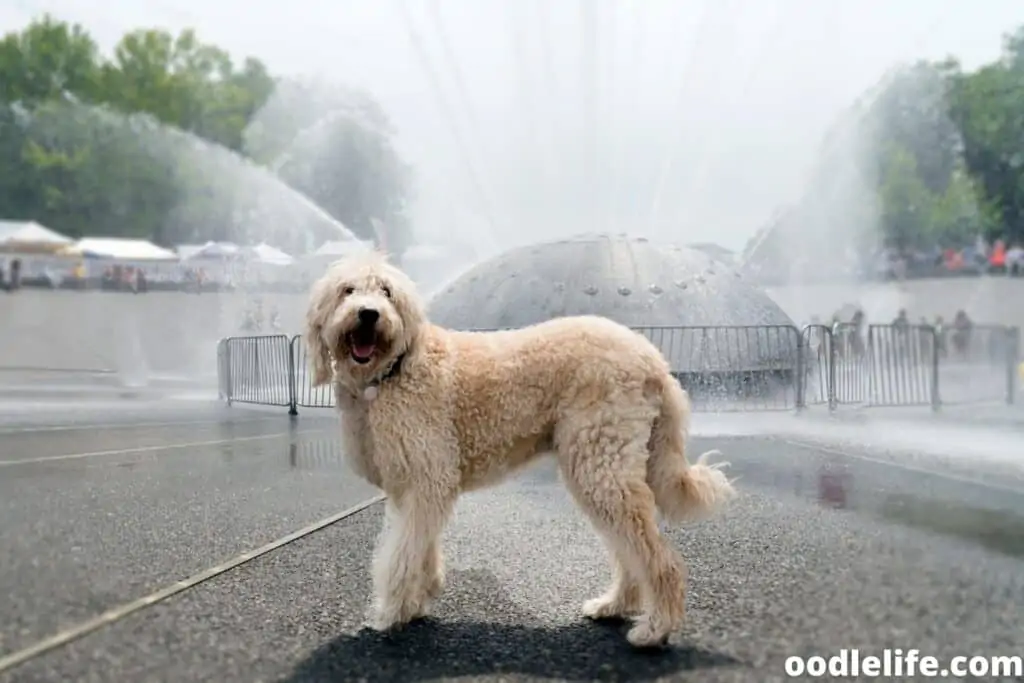
Here are a few other signs you should look out for:
- Hairless patches of skin
- Redness or inflammation of the skin
- Excessive scratching
- Loss of large patches of fur
- Scaly and dry skin
- Dry, brittle fur
- Your dog is resistant to touch
Common Myth About Shedding
We’ve all heard that the reason for aggravated allergies in humans is dog hair. But, that’s not entirely true!
While some people may be genuinely allergic to certain dog breeds, allergic reactions are typically caused by the dander or allergens present in dog fur. Without any exception, all dog breeds produce allergens that are responsible for allergies. These allergens are usually found in the dander, hair, urine, and saliva of a dog.
If your dog is cooped up indoors for too long, it is prone to producing more allergens. This is why it is essential to take your dog out regularly. Not just that, the dust and pollens that get trapped in your dog’s fur are also likely to result in allergic reactions.
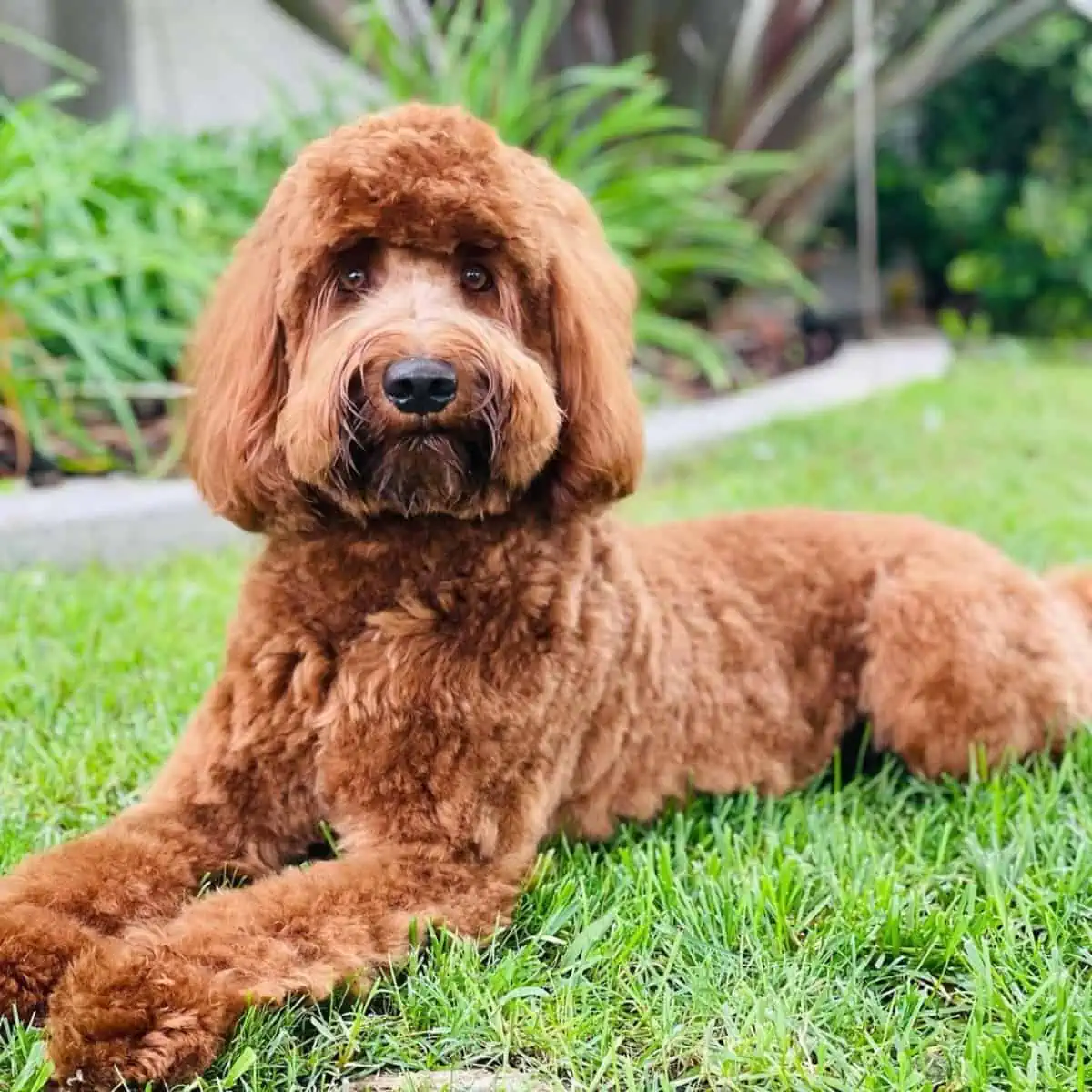
How To Tell What Type Of Coat A Labradoodle Will Have
Owning a Labradoodle pup will often have you wondering what type of coat your puppy will grow into. While there is no fool-proof way of deducing the type of coat your Labradoodle will have, there are still ways you can perhaps make an educated guess.
One such way is to learn about your pup’s parents. Your pup’s coat is, after all, the result of its genetic line. For example, an F1B Labradoodle typically has fleece fur. Tracing genetics will give you a clearer picture of the outcome you can expect.
Another way is to inspect the fur around the muzzle and the face of your Labradoodle pup. However, there’s no certainty to this method as a straight coat doodle pup can grow to have curls.
In the case of a fleece-haired coat, however, you will be able to determine the type of hair it will have by the time your pup is almost five weeks old by checking the fur around its eyes.
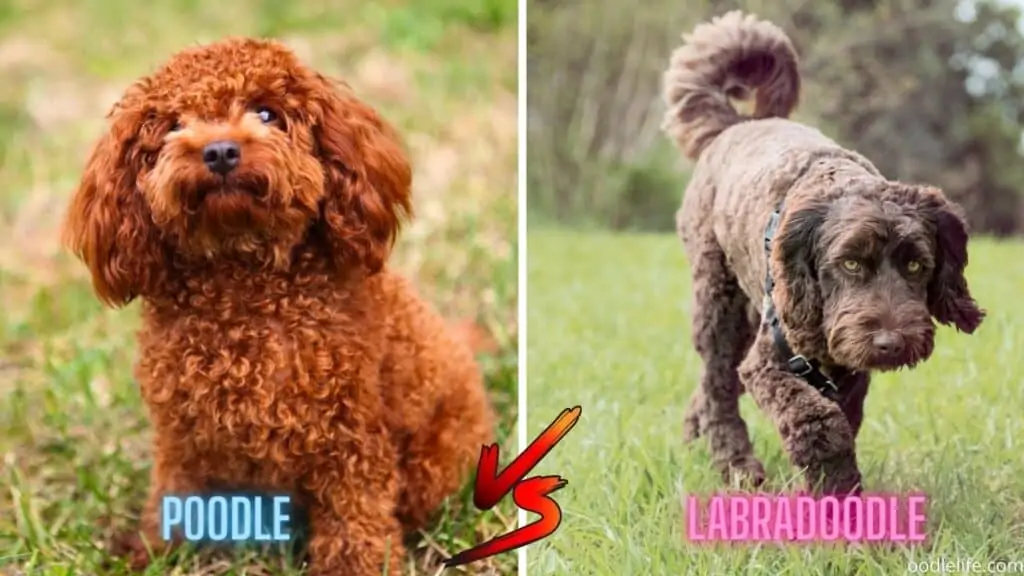
To Sum It Up
If you’ve been concerned about getting a Labradoodle because of shedding concerns, hopefully, this article has put your worries to rest.
Labradoodles make for an excellent choice for families with allergy concerns as they are hypoallergenic and do not shed much.
And once you are well-versed in taking care of your Labradoodle’s puppy coat and helping it transition into growing an adult coat through proper grooming, the rest is a walk in the park.